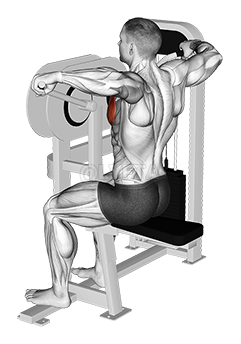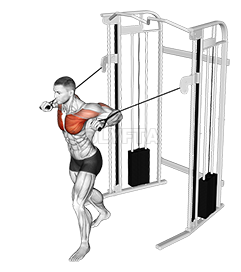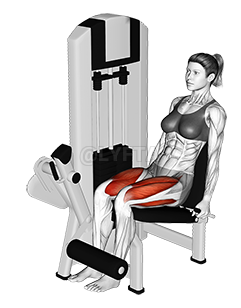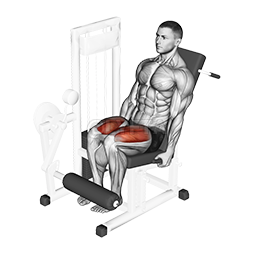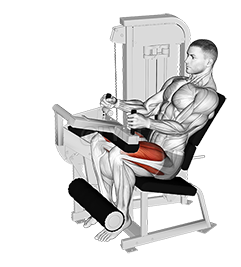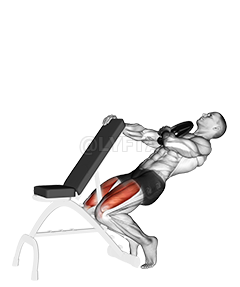
Dumbbell RDL Stretch Isometric
Exercise Profile
Related Exercises:
Introduction to the Dumbbell RDL Stretch Isometric
The Dumbbell RDL Stretch Isometric is a strength-building exercise that primarily targets the hamstrings and glutes, while also engaging the core and lower back. It's suitable for athletes of all levels, from beginners to advanced, as it helps improve muscle endurance, flexibility, and balance. Individuals may choose to incorporate this exercise into their routine to enhance overall lower body strength, improve posture, and potentially alleviate lower back pain.
Performing the: A Step-by-Step Tutorial Dumbbell RDL Stretch Isometric
- Start the exercise by bending at the hips and lowering the dumbbells down the front of your legs, keeping your back straight and your knees slightly bent.
- Lower the dumbbells until you feel a stretch in your hamstrings, usually when the dumbbells are just below your knees.
- Hold this position for a few seconds, keeping your muscles engaged and maintaining the stretch.
- Slowly raise your body back to the starting position, keeping your back straight and using your hips and hamstrings to lift the dumbbells. Repeat the exercise as needed.
Tips for Performing Dumbbell RDL Stretch Isometric
- Controlled Movements: When lowering the dumbbells, ensure that the movement is slow and controlled. Avoid the common mistake of letting the weights drop quickly or using momentum to lift them. The slower and more controlled the movement, the more effective the exercise will be.
- Knee Position: Keep a slight bend in your knees throughout the exercise. Avoid locking your knees or bending them too much, as both can lead to strain or injury. Your knees should be slightly bent but not move during the exercise.
- Engage Your Core: Another common mistake is not
Dumbbell RDL Stretch Isometric FAQs
Can beginners do the Dumbbell RDL Stretch Isometric?
Yes, beginners can definitely do the Dumbbell RDL (Romanian Deadlift) Stretch Isometric exercise. However, it's important to start with a light weight to get the form correct and prevent injury. This exercise primarily targets the hamstrings and glutes, but also works the lower back and core. It's a great exercise for improving strength, flexibility, and balance. Here are the steps to do it: 1. Stand tall with a dumbbell in each hand, palms facing your body. 2. Keep your feet hip-width apart. 3. Maintain a slight bend in your knees. 4. Hinge at your hips to lower the dumbbells along the front of your legs, keeping your back straight and your chest up. You should feel a stretch in your hamstrings. 5. Pause when the dumbbells are just below your knees. 6. Hold this position for a few seconds, maintaining the stretch and tension in your hamstrings and glutes. 7. Return
What are common variations of the Dumbbell RDL Stretch Isometric?
- Dumbbell RDL Stretch Isometric with Resistance Bands: In this variation, you incorporate resistance bands to increase the tension and difficulty level of the exercise.
- Dumbbell RDL Stretch Isometric with Kettlebell: Instead of using dumbbells, you can use a kettlebell for a different grip and weight distribution, which can engage different muscles.
- Dumbbell RDL Stretch Isometric with Raised Platform: By standing on a raised platform, you can increase the range of motion and effectively target your hamstrings and glutes.
- Dumbbell RDL Stretch Isometric with Twist: This variation involves adding a twist at the top of the movement to engage the obliques and other core muscles.
What are good complementing exercises for the Dumbbell RDL Stretch Isometric?
- Glute Bridges: Glute bridges complement the Dumbbell RDL Stretch Isometric by focusing on the glutes and hamstrings, but from a different angle and movement pattern, which can help improve overall strength and stability in these areas.
- Kettlebell Swings: This exercise complements the Dumbbell RDL Stretch Isometric as it also emphasizes hip hinge movement, which is crucial for the RDL, and targets the same posterior chain muscles (glutes, hamstrings, lower back) but with an added element of power and explosiveness.
Related keywords for Dumbbell RDL Stretch Isometric
- Dumbbell RDL Stretch workout
- Isometric hip exercises with dumbbells
- Dumbbell RDL for hip strength
- RDL Stretch Isometric exercise
- Dumbbell hip stretching workouts
- Isometric hip training with dumbbells
- Dumbbell RDL Stretch Isometric routine
- Strengthening hips with Dumbbell RDL
- Isometric workouts for hip flexibility
- RDL Dumbbell exercise for hip muscles.
